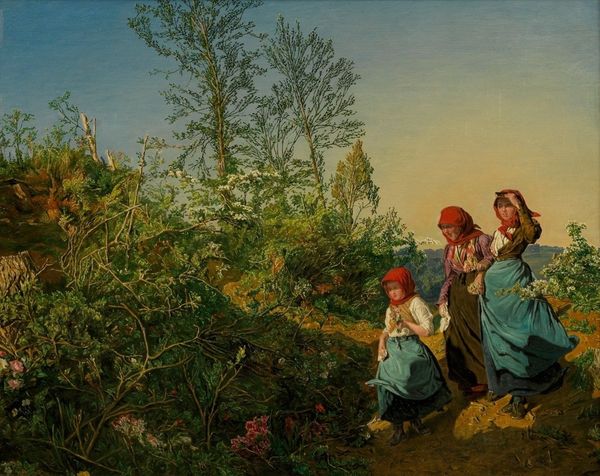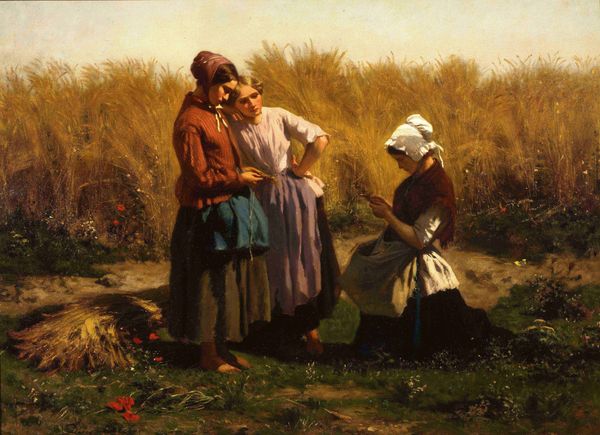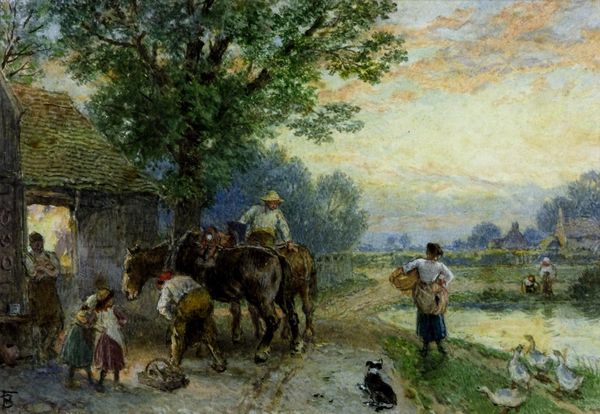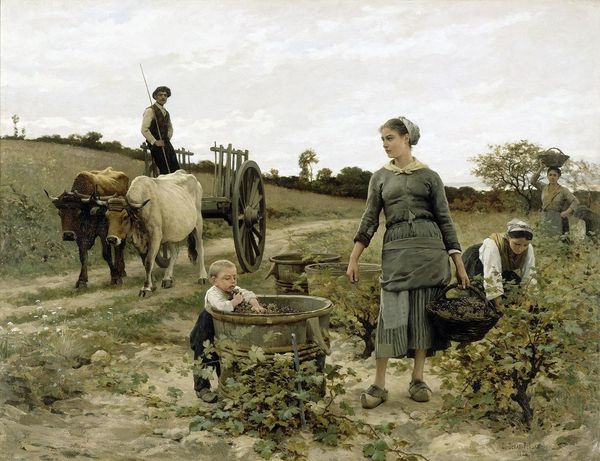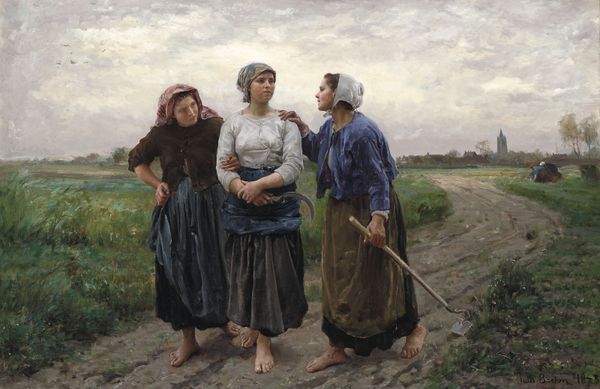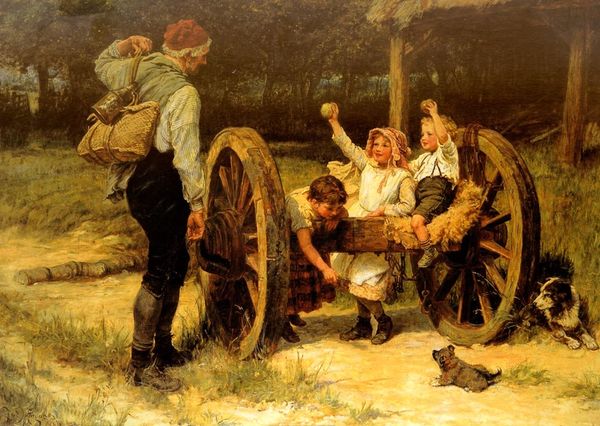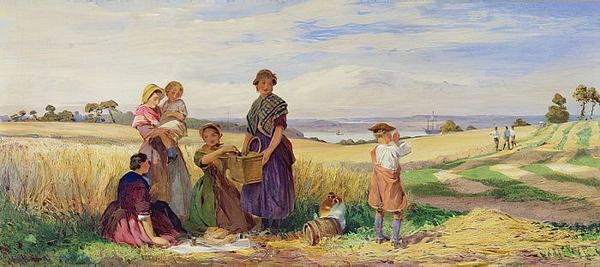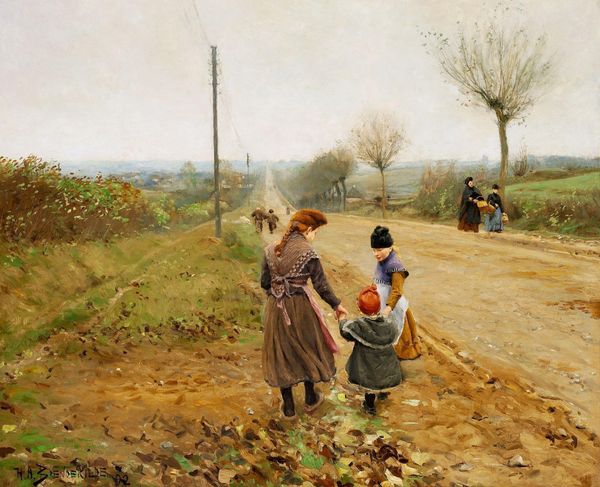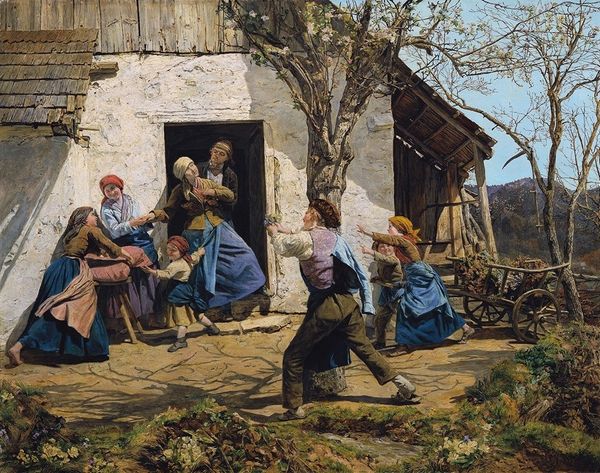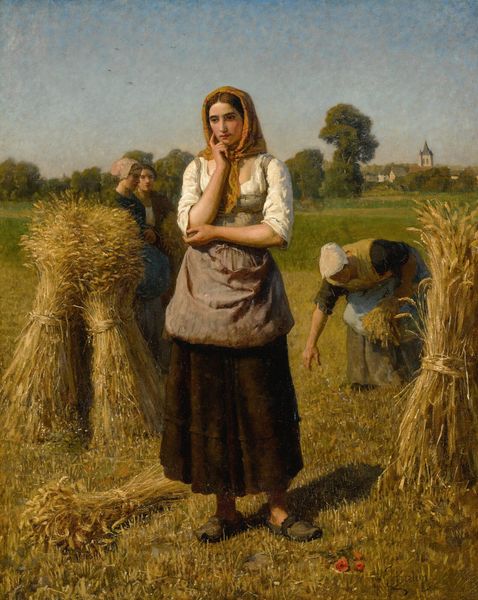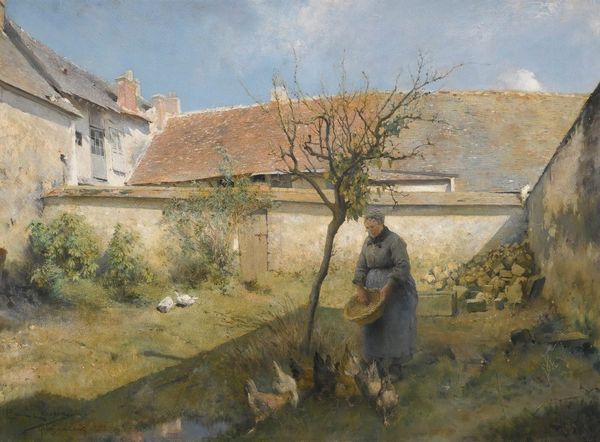
painting, oil-paint
#
portrait
#
painting
#
impressionism
#
oil-paint
#
landscape
#
painted
#
figuration
#
oil painting
#
genre-painting
Dimensions: 66 x 53.3 cm
Copyright: Public domain
Editor: Here we have Daniel Ridgway Knight's "Three Women in a Landscape," painted in 1881 using oil on canvas. I’m struck by how it manages to feel both idyllic and posed at the same time. What do you see in this piece from a structural point of view? Curator: It’s precisely that tension, as you say, that provides much of the interest from a formalist perspective. Note the carefully orchestrated arrangement of the figures in relation to the landscape. Knight employs a triangular composition, anchoring the scene with the figure on the left, then guiding the eye to the other two women by the wheelbarrow, up into the distant architecture and then up towards the upper reaches of the sky, which balances all below. Consider also the subtle gradations of light. Do you observe how he uses diffused lighting to soften the forms and create a sense of unity? Editor: Yes, I see it. The lighting does seem very deliberate. But is it just about composition and light? Isn't there any other message to decode? Curator: The "message," as you put it, is encoded in the relationships of the formal elements themselves. Knight is primarily interested in how light and shadow can be arranged in visual space. Do note the rendering of fabrics in the three woman figures and their rendering by Knight to show their relationship to nature, which creates another form of connection. Note the relationship of how each of them are standing or interacting with objects such as the wheelbarrow or milk jugs, etc. The buildings provide an aesthetic point, a static relation between the landscape, its features and the persons represented in the scene. This, coupled with their own dress sense is no doubt deliberately curated for aesthetics only. Any implied "message" of what it's about and who these people are must take a backseat when viewing art formally, which can be quite interesting for further investigations to cultural, artistic connections if the time permits. Editor: That makes sense. So, even though the subject matter seems straightforward, a formalist reading draws attention to the artistic choices and visual relationships that give the work its particular qualities. Curator: Precisely. And in doing so, hopefully enables you to consider the interplay of those elements with the implied cultural themes as secondary considerations. We should remember that art can have meaning via it’s cultural and other connections, if that becomes relevant. Editor: I'll definitely pay closer attention to composition in future works I encounter. Thanks for your insights!
Comments
No comments
Be the first to comment and join the conversation on the ultimate creative platform.
